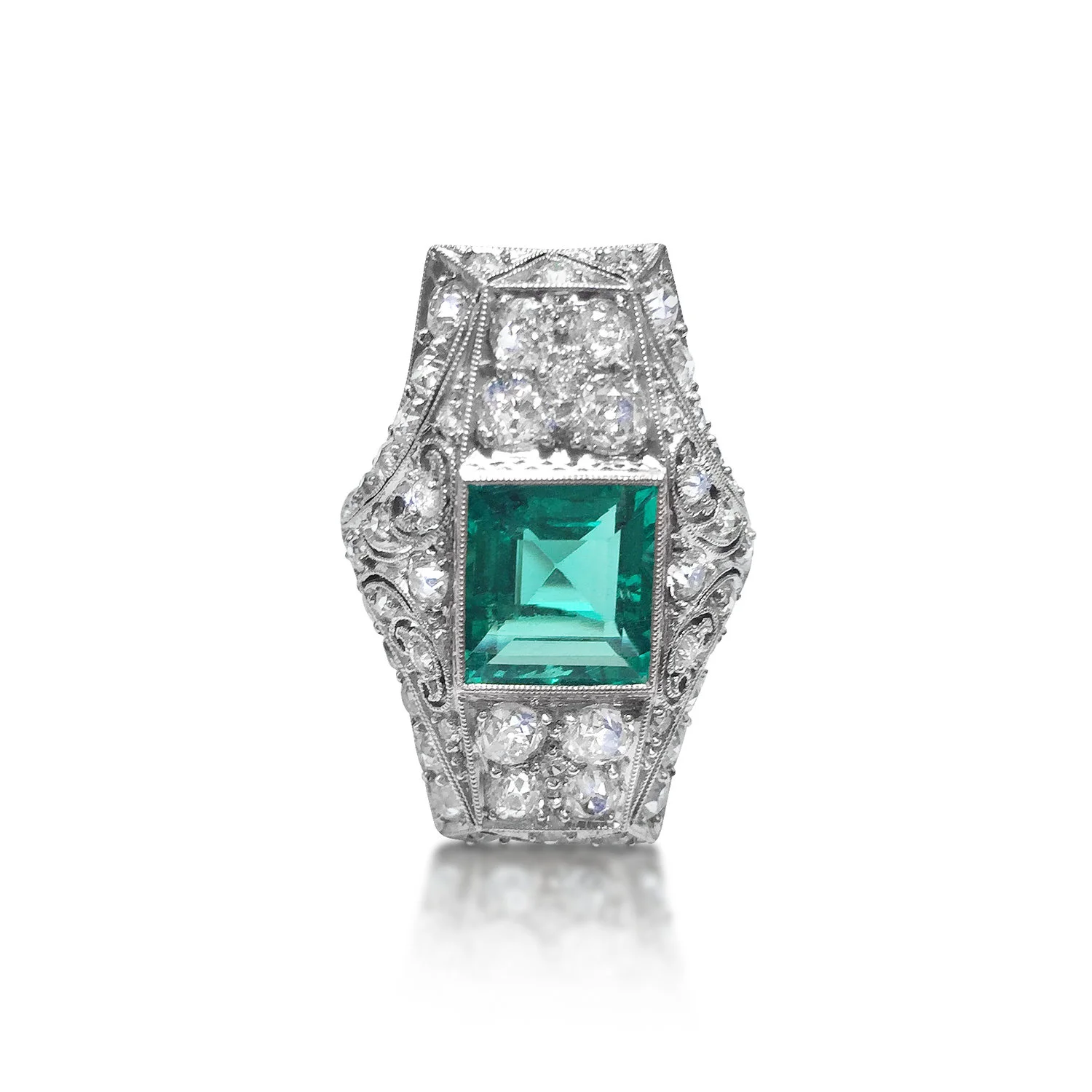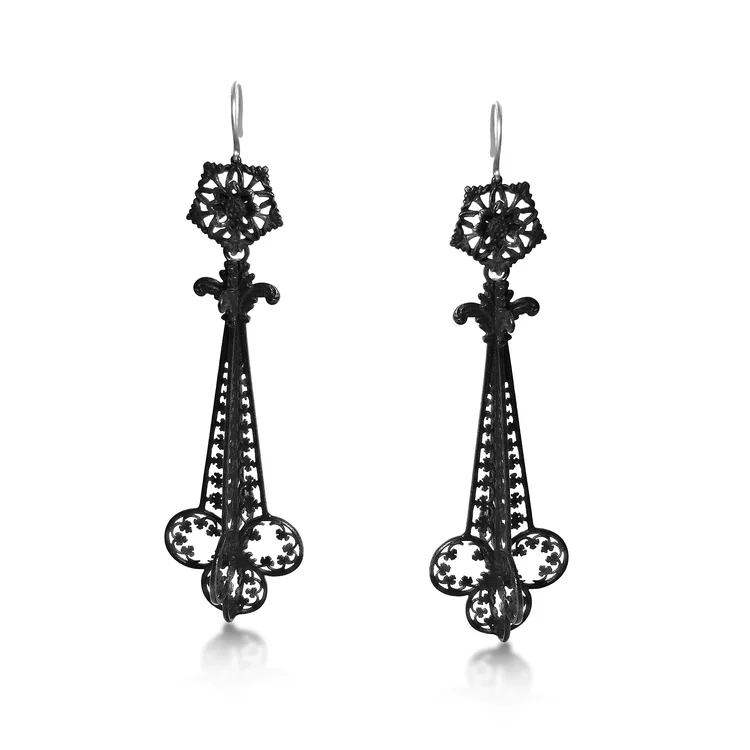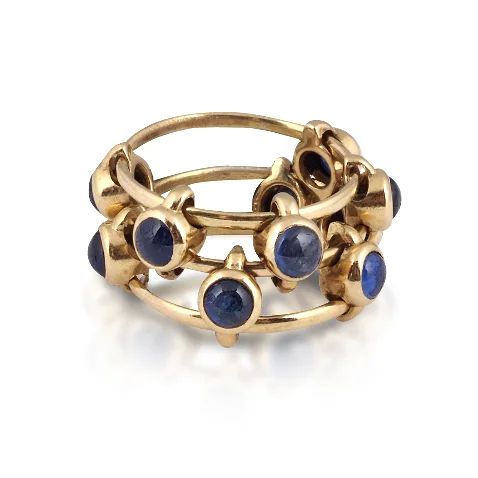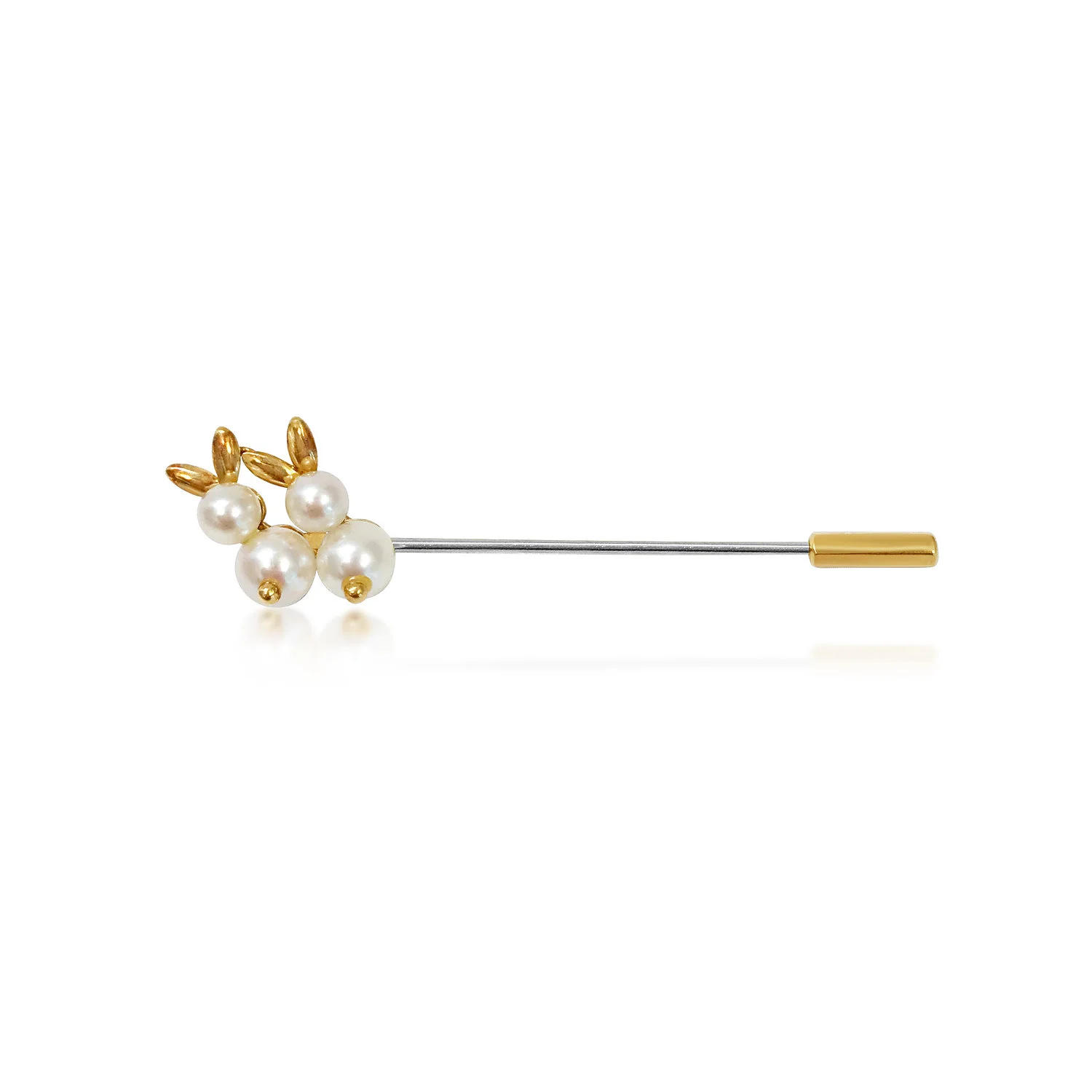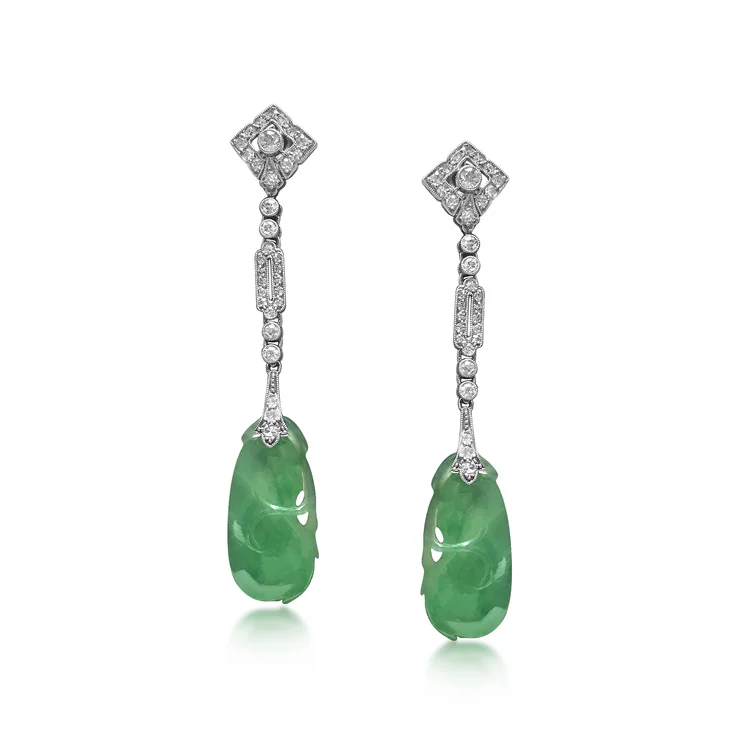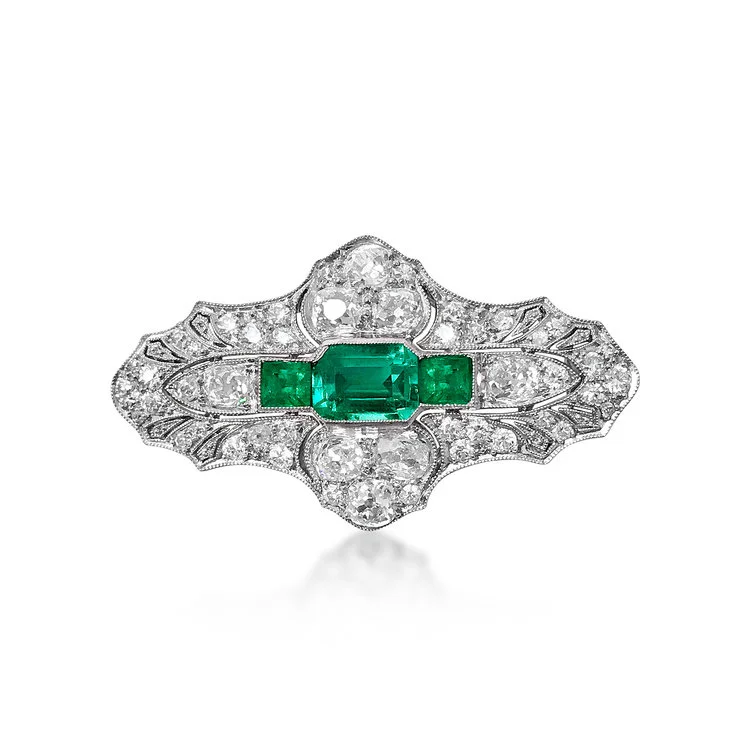On Vintage Jewellery - An Intern's First Impressions
By Christina Khoudian
I was invited to intern at Revival Jewels after meeting Brenda at the Singapore Jewellery and Gem Fair. For a newly qualified gemologist, the experience has been an excellent learning journey, being able to touch, feel and examine such wonderful pieces of craftmanship. Being entirely new to the world of vintage jewellery, these are some of the pieces I fell instantly in love with, for their beauty, design, gemstones, history or intrigue; or as Brenda would often describe, "goosebump inducing jewellery". Enjoy!
I only had the pleasure of seeing this ring very briefly before it was sold. It is unsurprising really, as it was truly stunning. Usually a lover of coloured gemstones, I was taken aback by the intricate design and detail of this ring. The engraving down the sides of the ring perfectly complemented the ring’s fine detail and I adored the old European-cut diamonds, which have a circular outline and the same number of facets as a modern round brilliant (being the precursor to this modern industry standard), but were hand cut, with a high crown, small table and open culet.
Old European-cuts were used as the main diamond style from the 1890's to the 1930's. There are many who prefer old-cut diamonds for their character and charm rather than modern diamonds that are cut to strict angles to maximise the return of light. The ethereal and delicate style of Belle Epoque and Edwardian jewellery was made possible by the invention of platinum in early 1900's, which allowed jewellers to create intricate embroidery and lace-like pieces which were strong, yet lightweight.
An Edwardian Emerald, Diamond and Platinum Ring
Another Edwardian ring that I liked a lot is the emerald and diamond platinum ring centering on a 2.8ct vivid green emerald of very good clarity. Again it is mounted in a wonderfully detailed elongated mount with milgrain detailed edges and set all over with old European cut diamonds. There is a small amount of engraving around the emerald mounting, engraving around the sides of the ring and extending down the sides of the ring shank.
A Pair of Berlin Ironwork Earrings
These interesting earrings are steeped in history. Berlin ironwork jewellery was produced in Berlin from 1804 and remained popular until the 1840s. Between 1813 and 1814, the Prussian royal family urged citizens to give up their gold and silver jewellery to fund the uprising against Napoleon during the War of Liberation. In return, citizens received iron jewellery often with the inscription ‘Gold gab ich für Eisen’ (I gave gold for iron), or ‘Für das Wohl des Vaterlands’ (for the welfare of our country/fatherland). This jewellery was cast in delicate open work forms that often resemble lace, and covered in a lacquer which makes it black and shiny and prevents the iron from rusting. Its lasting appeal makes it easy to be worn with the fashions of today.
A Yellow Gold and Sapphire 'Abacus' Ring, by JAR, circa 1979
Joel Arthur Rosenthal is an enima, a master jeweller that has been described as the ‘Faberge of our time’. Very little is known about JAR, who famously dislikes interviews. JAR operates his jewellery business from Place Vendôme in Paris with black windows, no sign and no advertising. You cannot decide to go there and choose to buy, but rather must know someone who knows. Only a limited number of pieces are created per year and are one-offs or designed for a particular wearer. His jewellery is famous for its unusual design and innovative approach and often feature unusually shaped stones. What I like about this ring is the movement of the sapphire cabochons around the ring and how the whole piece has a fluidity that makes it more like wearing a piece of fabric than jewellery.
Van Cleef and Arpels are a famous French jewellery house known for producing some of the world's most stunning jewels and worn by style icons such as the Duchess of Windsor and Elizabeth Taylor. Animals have always been a recurring theme at the house of VCA and their menagerie of creatures have remained popular over the years. What I enjoyed most about this bunny jabot pin is for its whimsical factor and sweet appeal. I think it is a clever use of pearls, making them more lighthearted and youthful.
A Pair of Art Deco Diamond and Jadeite Ear Pendants, circa 1925
Art Deco was a brilliant mishmash of different styles such as the cubism and fauvism art movements, the aesthetics of China, Japan, India, Persia, Ancient Egypt and Mesoamerican art, and even the Ballet Russes; resulting in thoroughly modern designs that were mostly linear, daring and geometric. These ear pendants have a platinum and old European-cut mounting with milgrain detailing. The mount is geometric in design following the Art Deco style, but I like this especially combined with the carved jadeite pea pods which lend the earrings softness. The translucency and soft mottled green colour of the jadeite combines well with the platinum and diamond mounts and gives the earrings a sophisticated and stylish look. I’ve seen my share of jadeite as a gemologist but these carvings are particularly attractive being flecked with different shades of green and their translucency might make you forget that they are not real and have just been plucked off a plant to adorn your ears!
Marcus and Co was an American luxury jeweller based in New York City from 1892 to 1962. This brooch is beautiful and so detailed, it was difficult to get a photo that would do the piece justice! Three beautiful bluish-green emeralds are the focus of the attention in the centre of the brooch but are wonderfully accented with diamond, milgrain and open work detailing. What impressed me greatly to learn about vintage jewellery was that pieces can often be worn in more than one way. This brooch, for example, has a tiny screw that removes the brooch pin mounting, and a loop that flips out, enabling the piece to be worn as a pendant. The attention to detail and thoughtful design is simply astounding. A piece that can be worn in multiple ways would definitely attract me to buy vintage in the future.
Art Deco Sapphire and Diamond Brooch
Sapphire with diamond is a wonderfully classic combination in jewellery that creates a refined elegance. This lovely Art Deco Brooch has five French cut diamonds, a cut which I had not come across prior to my internship. Dating back to the 1400's, French cuts typically have 18 to 24 facets. They evolved from table cuts, one of the oldest diamond cuts. French cuts regained popularity in the Art Deco period where they complemented the geometric designs typical of that time. The sapphires in this piece are referred to as calibré cut, which means they have been cut precisely to fit into the jewellery design (as opposed to using pre-cut stones) - a technique often used in Art Deco jewellery. This type of technical expertise and attention to detail can rarely be found today.


